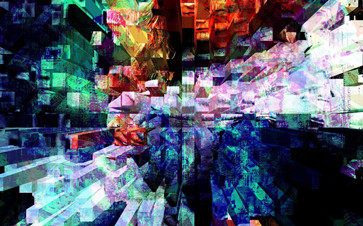New Technique Allows for Printing Two Colors at Once With Nanoscale Pixels
Time:2017-11-21 From:

Researchers at the University of Glasgow have found a way to print two colors in only one pixel, using nanomaterials. With this revolutionary approach, new standards in data storage or anti-counterfeiting measures could be set.
Nanoscale Pixels: Of Childhood Treasures and Science
As children, we loved those little cards which would display two different pictures depending on how we were holding them. We collected these cards, because to us, they were small treasures. You might remember them, too.
Precious – in a real sense – is the detection of a research team at the University of Glasgow. Biomedical engineering lecturer Dr. Alasdair Clark and his team have developed a printing-technique which allows for printing two colors at once, thus creating two entirely different pictures on only one surface, but exceptionally detailed ones with an incredibly high resolution. We’re talking about 100,000 dots per inch (dpi) instead of e.g. 300 dpi of a magazine image. For data storage, digital imaging or anti-counterfeiting measures, this could be a real game-changer.
Dye was Yesterday – Hello Structural Color with Nanoscale Pixels
To print colors, one usually uses dye or pigment. Another way, though, is the one the team chose. They created what they call a plasmonic color technology to achieve the desired effect. Time to get into the details:
Their technique can be subsumed under the field of structural color technique. Here, color is made of a nanostructured material (in their case by a nano-scale plasmonic color filters) that reflects light, hence produces color, hence is said to have structural color – and this is their novelty: Creating two colors in one pixel using structural color, where the reflected color depends on the orientation of the light which hits the particle.
Dr. Clark:
“We’ve discovered that if we make color pixels from tiny cross-shaped indents on a strip of aluminum film, the color they display becomes polarisation-dependent, allowing us to encode two colors into a single pixel, and then select which color is displayed by shining different polarisations of light at the surface.”
“By changing the size and shape of the indent, we can create a wide range of different colors at very high resolutions.”
But listen to him as he explains their work in this video.
We’ve already talked about the high-resolution structural color printing allows. But there are more benefits to this technique.
First and foremost, the amount of information stored in a unit-area is twice as high. According to Dr. Clark, we’re talking about 1.46 Gb per square centimeter, equaling a storage of more than 900 Gb of data on an A4 sheet.
Second, the colors won’t fade, which, together with their very high resolution and data storage capacity, makes them ideal for long-term data archival.
Third,
“the process to produce the plasmonic colors is difficult to replicate without access to dedicated facilities, so it could be ideal for creating a new kind of anti-counterfeiting material for banknotes”,
Dr. Clark states.
And last but not least, digital photography might benefit as new possibilities of developing color filters open up.
News Source:Blog drupa
Written By drupa Redaktion

